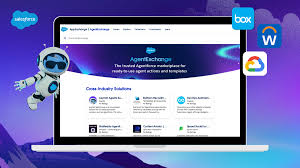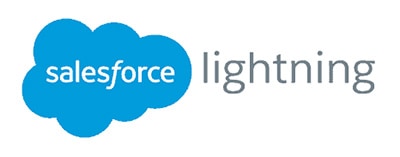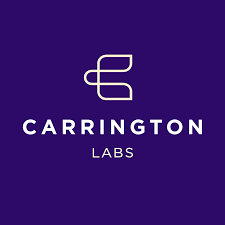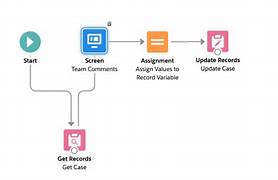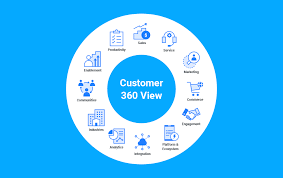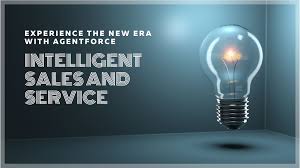Supercharge Salesforce Agentforce with OpenText AI-Powered Insights
The future of intelligent customer engagement is here. OpenText and Salesforce are revolutionizing AI-driven workflows with deep content integration, empowering sales and service teams to work smarter, faster, and with greater accuracy. AI in Sales & Service: The Need for Trusted Data AI is transforming business operations:✅ 83% of AI-powered sales teams report revenue growth✅ 93% of service teams achieve time and cost savings But success depends on trusted data. With 98% of sales leaders emphasizing the need for accurate, secure, and compliant information, OpenText Content Cloud provides the foundation for reliable AI—seamlessly integrated with Salesforce. OpenText + Salesforce: AI Innovation Leaders Since 2016, OpenText has enhanced Salesforce with powerful content management solutions. Now, we’re taking it further with GenAI-powered automation:✔ OpenText™ Content Aviator delivers AI-driven insights from unstructured data (contracts, emails, documents)✔ Selected as a launch partner for the Agentforce Partner Network✔ First-to-market solution on Salesforce’s new AgentExchange—making AI agent deployment faster than ever Key Use Cases 🔹 Sales Teams – Summarize customer buying trends, auto-generate upsell recommendations🔹 Customer Service – Instantly resolve claims by extracting key details from documents🔹 Claims Processing – Automate approvals with AI-powered document analysis How It Works: AI Insights → Agentforce Actions OpenText Content Aviator for Agentforce unlocks hidden insights from unstructured content stored in OpenText Content Management, then feeds them directly into Salesforce Agentforce to trigger smart, automated actions. Key Benefits 🚀 Accelerate Sales Cycles – Auto-summarize contracts, identify upsell opportunities🎯 Enhance Customer Service – Resolve cases faster with AI-generated insights✍ Reduce Manual Work – Auto-update Salesforce records, eliminating errors📧 Personalize at Scale – Draft tailored email responses using AI insights Now Available ✔ Integrated with OpenText Content Management CE 25.1✔ Coming soon to OpenText Core Content SaaS (CE 25.3) OpenText Content Aviator and Salesforce Agentforce integration provides AI-driven insights for Sales and Customer Service teams, enhancing productivity and accelerating processes. This integration enables users to discover, summarize, and translate business workspace content directly within Agentforce, eliminating the need to switch applications. Essentially, it leverages AI to extract valuable insights from unstructured data like documents, contracts, and emails, and then uses those insights to drive data-driven actions within Agentforce What’s Next? The Future of AI-to-AI Integration This is just the beginning. OpenText is expanding AI-driven automation across the entire content lifecycle, with upcoming innovations including:🔹 More AI agents for sales, service, and operations🔹 Industry-specific solutions (banking, insurance, healthcare)🔹 Bi-directional AI – Blending insights from multiple AI systems for smarter decision-making OpenText™ Content Aviator puts AI into the hands of business users to leverage conversational search, discover content, or even summarize a document or workspace, offering new ways to interact with content and extract knowledge. Content Aviator enables organizations to combine the power of generative AI and large language models (LLMs) with OpenText content services platforms, including OpenText™ Core Content Management, OpenText™ Documentum™ Content Management (CM) and OpenText™ Content Management (Extended ECM), to make document management, knowledge discovery, and business process automation more efficient, effective and intelligent. Get Started Today ✅ Explore OpenText Content Aviator for Agentforce on Salesforce AgentExchange✅ Discover all OpenText-Salesforce integrations on the Salesforce AppExchange Unlock the power of AI-driven content intelligence—and transform the way your teams work. Contact Tectonic today to leverage AI-driven content intelligence. Like1 Related Posts Salesforce OEM AppExchange Expanding its reach beyond CRM, Salesforce.com has launched a new service called AppExchange OEM Edition, aimed at non-CRM service providers. Read more The Salesforce Story In Marc Benioff’s own words How did salesforce.com grow from a start up in a rented apartment into the world’s Read more Salesforce Jigsaw Salesforce.com, a prominent figure in cloud computing, has finalized a deal to acquire Jigsaw, a wiki-style business contact database, for Read more Service Cloud with AI-Driven Intelligence Salesforce Enhances Service Cloud with AI-Driven Intelligence Engine Data science and analytics are rapidly becoming standard features in enterprise applications, Read more

